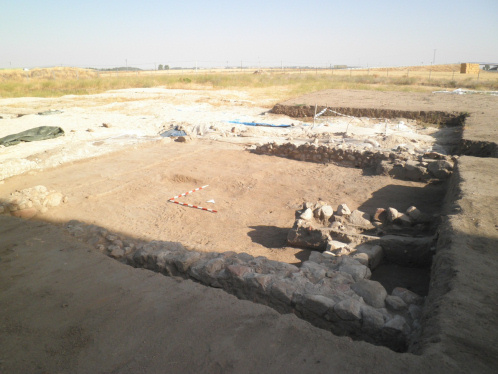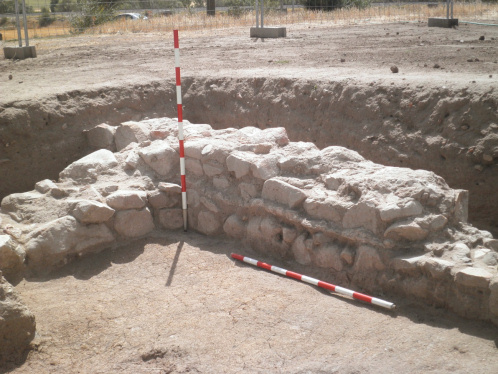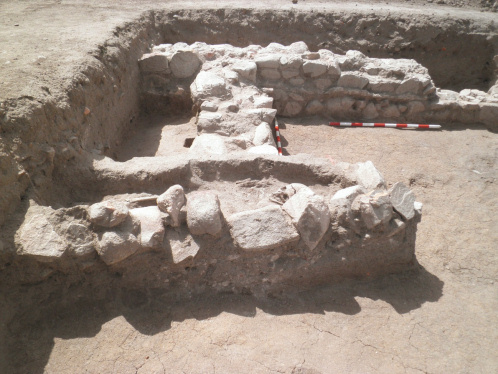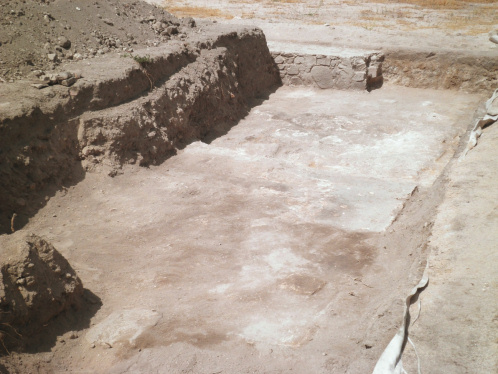The excavation work continues with the removal of a debris level. This level sealed the late-ancient villa's structures. Thanks to our meticulous exhumation, we have found and documented the presence of debris from the collapse of a great room, partially found and documented during the previous campaign (2011). The most interesting part of this layer of rubble is that some of them correspond to the perimeter walls, made with bricks plastered with a thick layer of lime and sand (at some points this layer is more than 10cm, or 4in, thick), which collapsed almost orderly on the deposits already accumulated on the floor. This fact will let us guess at least the height of the room; a really important thing for this type of construction generally plundered to the ground.
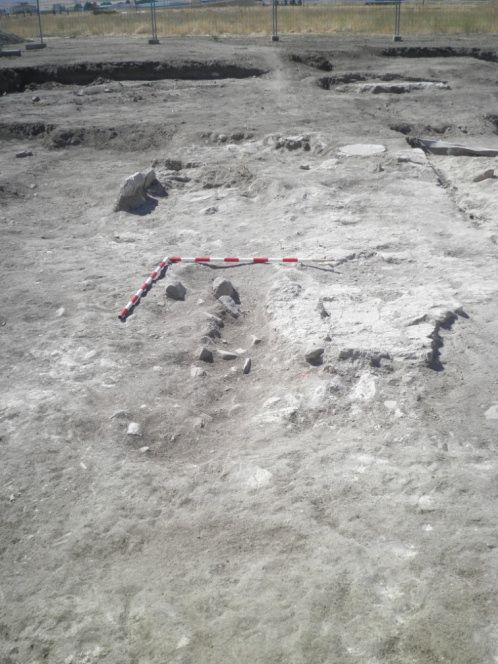
As is usual, these levels were created from the looting and destruction of the villa and were sometimes altered by the presence of burials, either Visigothic or medieval/modern.
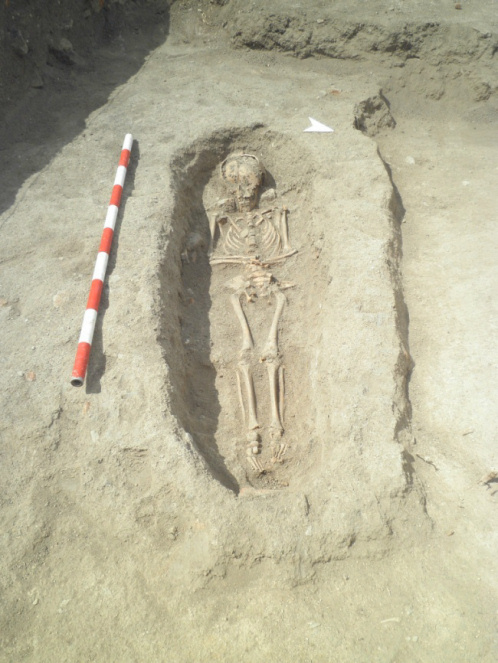
Translated by Lara M. Moreda
Edited by Andrew B. Greeves
Edited by Andrew B. Greeves



